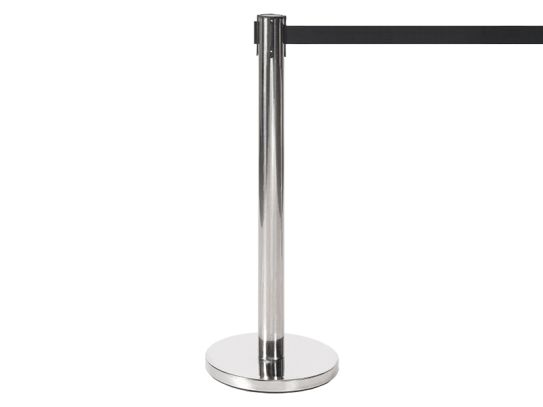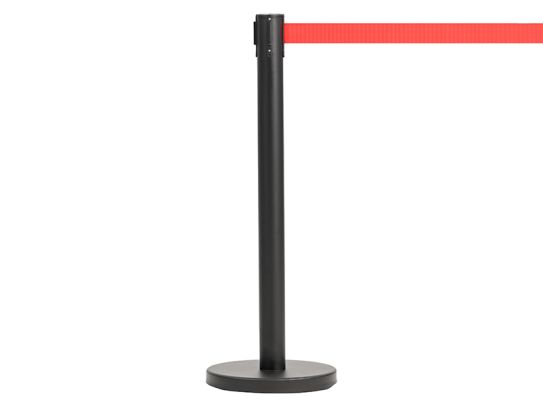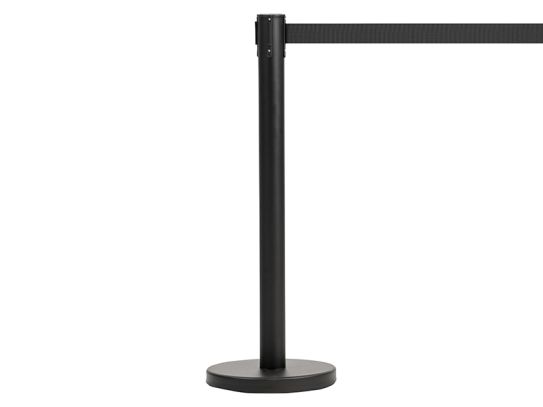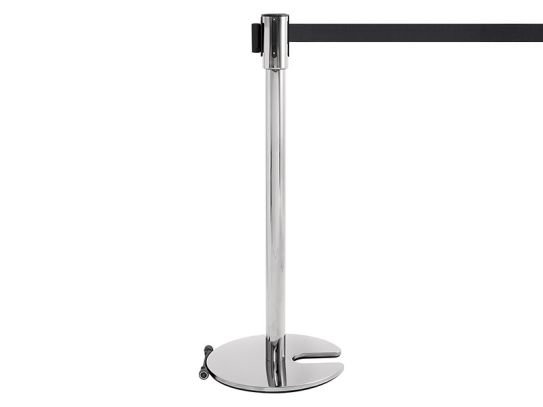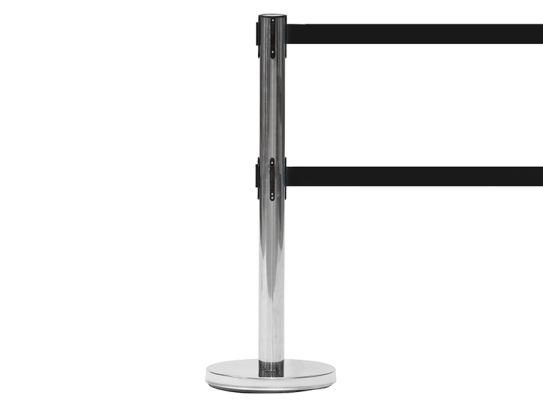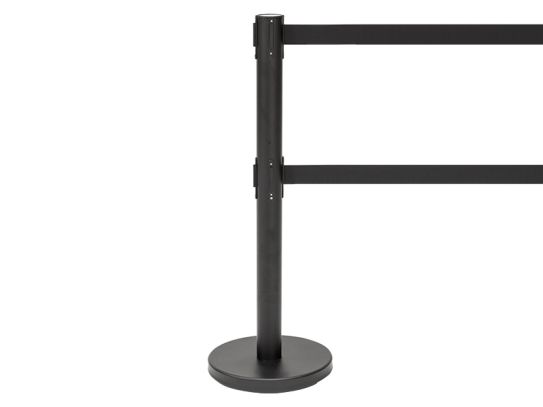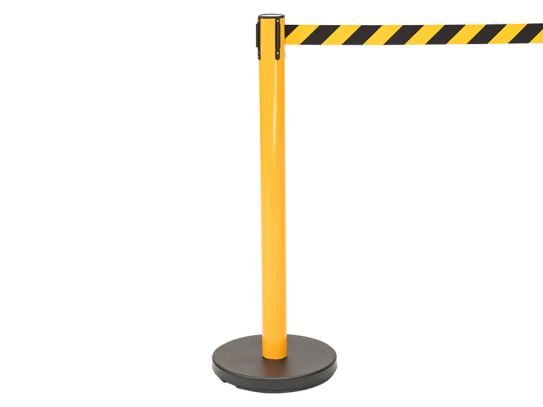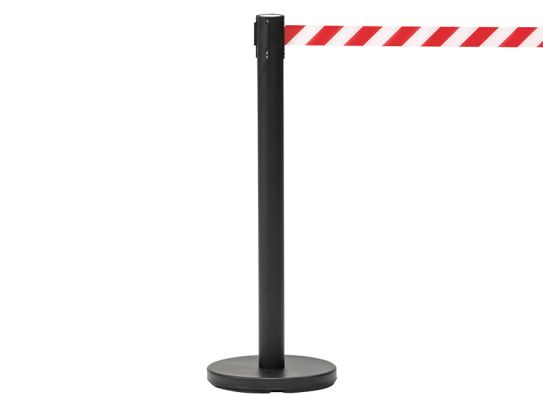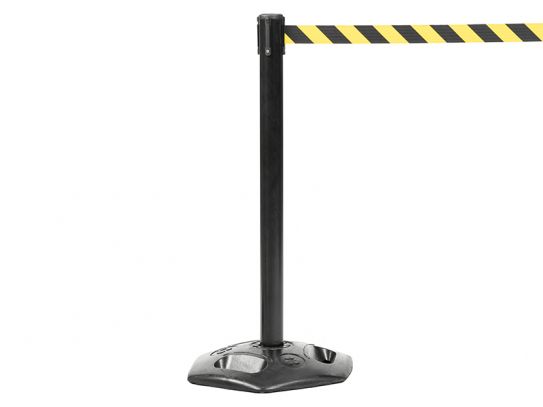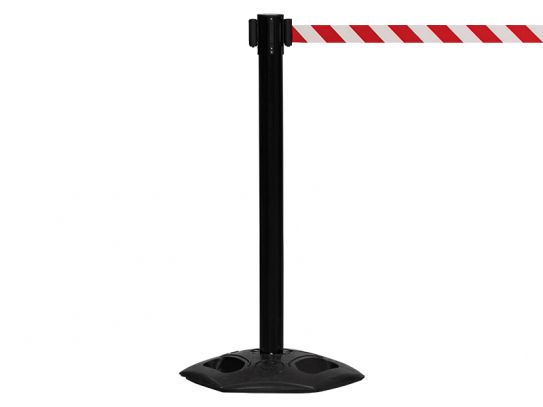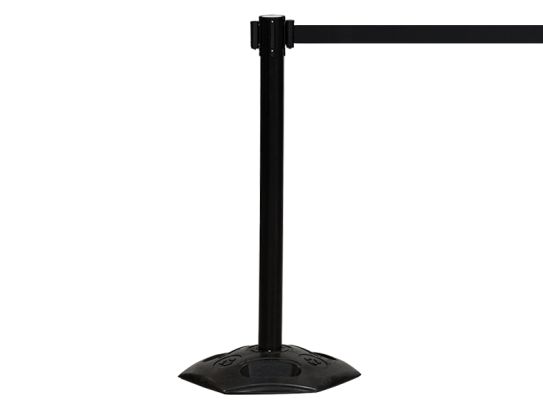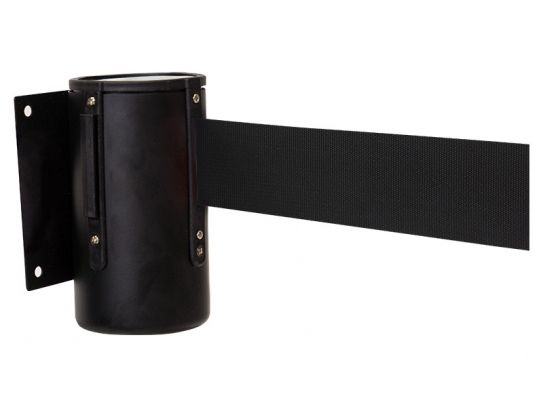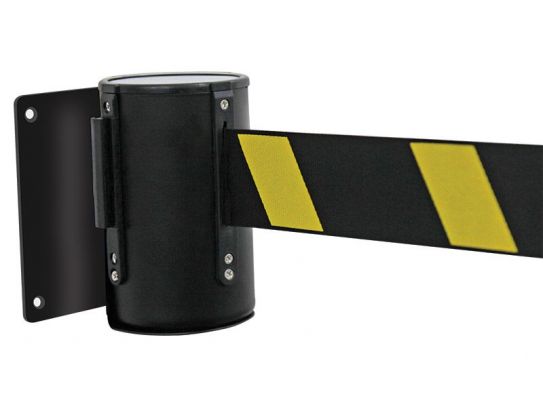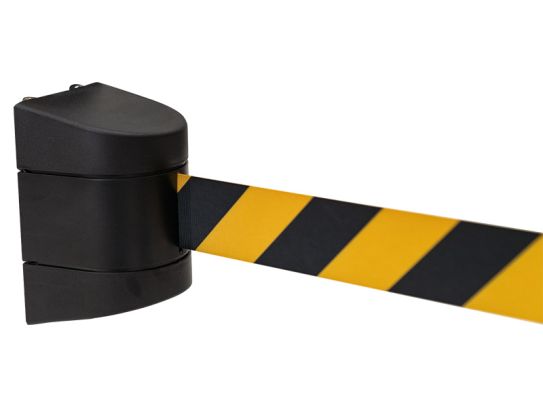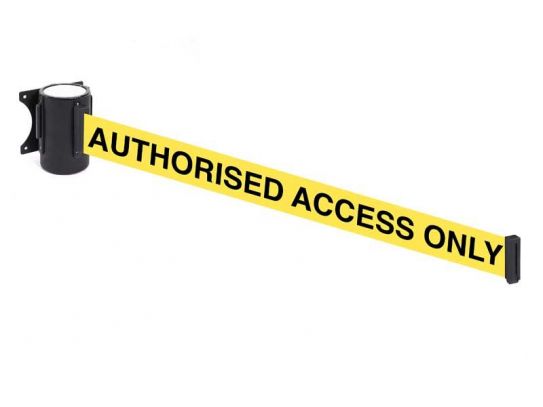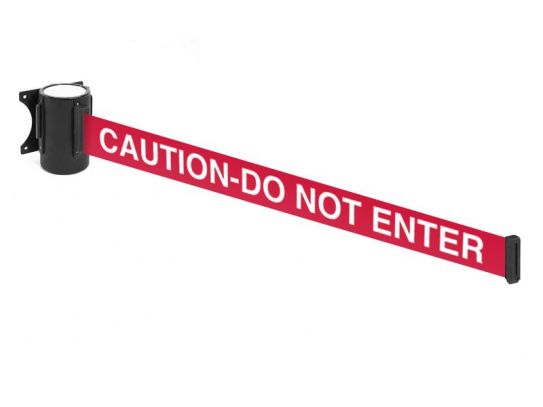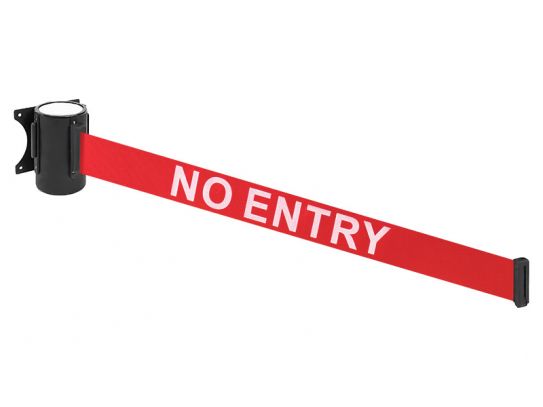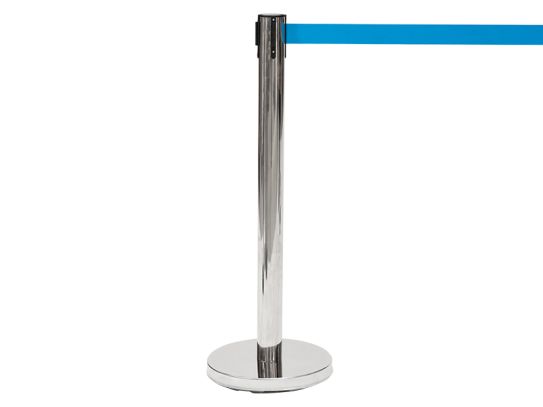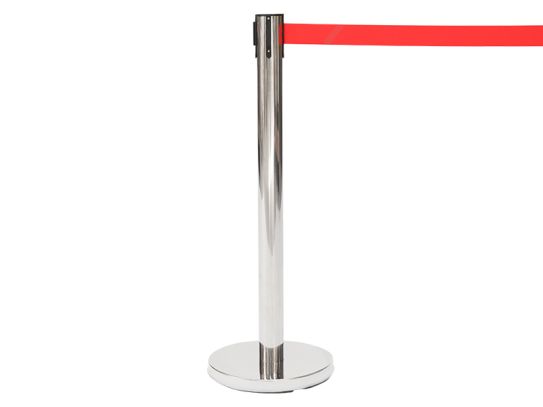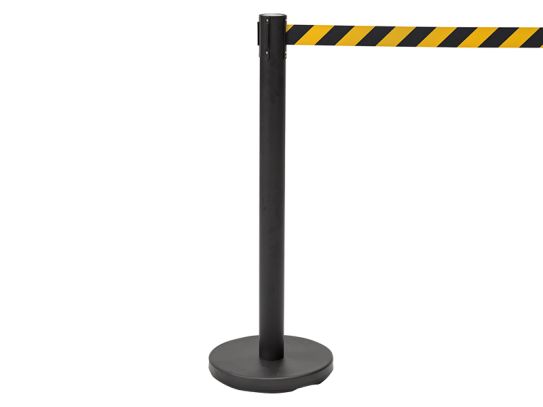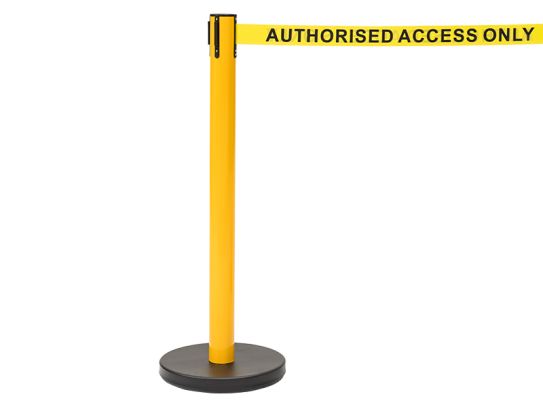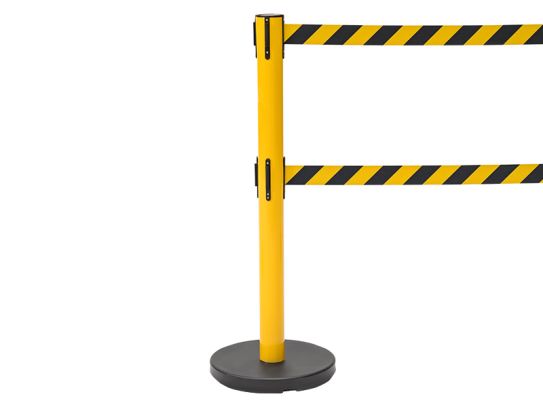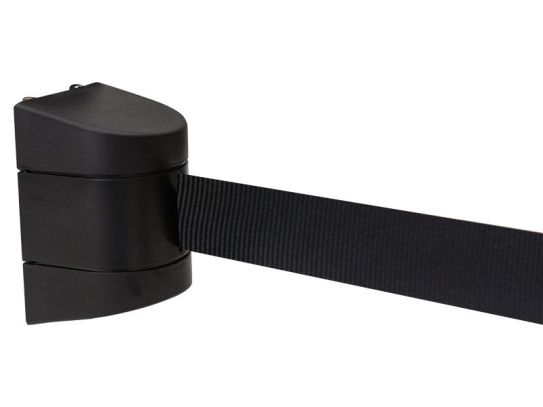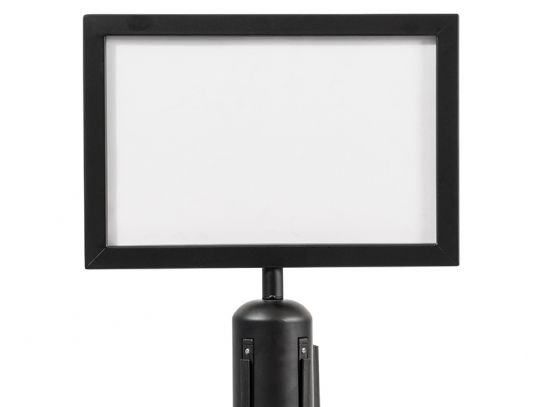Retractable Barriers
Say Goodbye to Messy Lines with Our Sleek Retractable Belt Barriers
Are you tired of messy, cluttered queues and lines at your events or storefronts? Our retractable belt barriers are the perfect solution! These sleek, modern barriers are a great way to create a professional, organised look at any event or storefront.
With a smooth, quiet retraction mechanism and a durable, high-quality construction, our retractable belt barriers are built to last. Plus, their sleek, compact design makes them easy to store and transport, so you can use them wherever and whenever you need them.
Not only do our retractable belt barriers look great, but they're also incredibly functional. They can be easily adjusted to the perfect length to create a secure, defined space for lines or crowds. And with a range of vibrant, eye-catching colours to choose from, you can customise them to match your brand or event theme.
So why settle for a cluttered, unorganised space when you can create a professional, polished look with our retractable belt barriers? Order yours today and experience the difference for yourself!
What Is a Retractable Belt Barrier?
A retractable belt barrier, also known as a retractable stanchion, is a type of crowd control barrier. It consists of a vertical pole with a retractable belt attached to it that can be extended across an area to block off or designate a specific space. Retractable belt barriers are commonly used in places such as airports, banks, and museums to manage crowds and maintain order. When not in use, the belt can be easily retracted back into the pole, allowing the barrier to be easily moved or stored.
How Do Retractable Belt Barriers Work?
Retractable belt barriers consist of a vertical pole with a retractable belt attached to it. The pole is typically mounted on a base that can be weighted or bolted to the ground for stability. To use the barrier, the belt is pulled out from the pole and extended across the area to be blocked off. The belt is typically connected to the pole at both ends, allowing it to be extended in a straight line or at an angle. When the belt is not in use, it can be easily retracted back into the pole by pulling on a release mechanism, allowing the barrier to be easily moved or stored.
What Are the Most Common Applications for Retractable Belt Barriers?
Retractable belt barriers are commonly used in a variety of settings to manage crowds and maintain order. Some of the most common applications for these barriers include:
- Airport security: Retractable belt barriers are often used in airports to manage crowds and create orderly lines at security checkpoints and other areas.
- Museums and galleries: These barriers are often used in museums and galleries to control the flow of visitors and prevent them from entering restricted areas or touching exhibits.
- Banks and other financial institutions: Retractable belt barriers are commonly used in banks and other financial institutions to manage crowds and create orderly lines at teller windows and other service areas.
- Retail stores: These barriers are often used in retail stores to manage crowds and create orderly lines at checkout counters and other areas.
- Events: Retractable belt barriers are frequently used at events such as concerts, festivals, and sporting events to manage crowds and designate specific areas for attendees.
What Are the Different Types of Retractable Belt Barriers?
There are several different types of retractable belt barriers, each designed for specific applications and settings. Some of the most common types of retractable belt barriers include:
- Single-pole barriers: These barriers consist of a single vertical pole with a retractable belt attached to it. They are typically lightweight and portable, making them ideal for use in settings where they need to be moved or stored frequently.
- Double-pole barriers: These barriers consist of two vertical poles connected by a retractable belt. They are more stable and durable than single-pole barriers, making them well-suited for use in high-traffic areas or outdoor settings.
- Wall-mounted barriers: These barriers are mounted on a wall or other vertical surface, allowing the belt to be extended horizontally across an area. They are often used in settings where floor space is limited or when it is not possible to use a freestanding barrier.
- Crowd control barriers: These barriers are designed specifically for use in managing crowds. They often have additional features such as reinforced bases and extra-wide belts to provide added stability and visibility.
What Are the Key Features to Look for When Buying Retractable Belt Barriers?
When shopping for retractable belt barriers, there are several key features to consider. Some of the most important features to look for include:
- Material: Retractable belt barriers are typically made from metal, plastic, or a combination of both. Metal barriers are typically more durable and long-lasting, but they can be heavy and difficult to move. Plastic barriers are lighter and more portable, but they may not be as durable.
- Belt length: The length of the retractable belt is an important factor to consider, as it determines how far the barrier can be extended. Depending on the specific needs of the user, a longer belt may be necessary to block off larger areas or to create wider lines.
- Belt colour: Retractable belt barriers are available in a variety of colours, including red, yellow, blue, and black. The colour of the belt can be used to match the colour scheme of a specific setting or to convey a specific message or warning. For example, red belts may be used to indicate a restricted area, while yellow belts may be used to indicate a cautionary area.
- Belt design: Retractable belt barriers are available with a variety of belt designs, including plain, striped, and printed. Some belts may have reflective strips or other visibility-enhancing features to make them more visible in low-light conditions.
- Release mechanism: The release mechanism is the mechanism used to retract the belt back into the pole. Different types of release mechanisms are available, including push-button, lever-style, and automatic. Depending on the specific needs of the user, a particular release mechanism may be more or less suitable.
- Stability: The stability of the retractable belt barrier is an important factor to consider, particularly if it will be used in a high-traffic area or outdoors. Stable barriers are less likely to tip over or become dislodged, which can create safety hazards and disrupt the flow of traffic. Look for barriers with reinforced bases and sturdy construction to ensure maximum stability.
What Factors Should Be Considered When Choosing a Retractable Belt Barrier?
When choosing a retractable belt barrier, there are several factors to consider. Some of the most important factors to consider include:
- The intended use: The specific intended use of the retractable belt barrier will determine which features and characteristics are most important. For example, if the barrier will be used in a high-traffic area or outdoors, stability and durability may be the most important factors. If the barrier will be used in a retail store, the colour and design of the belt may be more important.
- The size of the area to be blocked off: The size of the area to be blocked off will determine the length of the retractable belt needed. Be sure to measure the area carefully and choose a barrier with a belt that is long enough to block off the entire area.
- The number of barriers needed: Depending on the specific needs of the user, multiple barriers may be needed to block off a larger area or to create longer lines. Consider the total number of barriers needed and choose a model that is available in the appropriate quantity.
- The budget: Retractable belt barriers are available at a range of price points, from budget-friendly options to more expensive models. Consider the overall budget for the barriers and choose a model that provides the desired features and benefits at a price that is within the budget.
- The space available for storage: When not in use, retractable belt barriers can be retracted and stored in a compact form. Consider the available space for storage and choose a barrier that can be easily stored when not in use.
- The colour and design: Retractable belt barriers are available in a range of colours and designs. Consider the colour scheme and aesthetic of the setting where the barrier will be used, and choose a barrier that complements the surroundings.
What Are the Advantages and Disadvantages of Using Retractable Belt Barriers?
Retractable belt barriers offer several advantages, including:
- They are a cost-effective and easy-to-use solution for managing crowds and creating orderly lines.
- They are portable and easy to move, allowing them to be easily deployed and stored as needed.
- They are available in a range of sizes, colours, and designs, making it easy to find a barrier that is suitable for a specific application.
- They are durable and long-lasting, with some models designed to withstand heavy use and harsh environments.
- They are easy to maintain, with most models requiring only occasional cleaning and maintenance.
However, retractable belt barriers also have some disadvantages, including:
- They may not be suitable for use in settings where high security is required, as they can be easily bypassed or moved.
- They may not be as effective at managing crowds in large, open areas, as the belt can only be extended in a straight line or at an angle.
- They may not provide as much stability as other types of barriers, such as barricades or fencing, making them less suitable for use in high-traffic areas or outdoor settings.
- They may not be as visible as other types of barriers, depending on the colour and design of the belt. This can be a safety concern in low-light conditions or in settings where visibility is important.
Retractable belt barriers are a useful and versatile tool for managing crowds and creating orderly lines. However, they may not be suitable for every application and should be used with care to ensure the safety and security of the people using them.
How Do Retractable Belt Barriers Compare to Other Types of Barriers?
Retractable belt barriers are a popular and effective option for managing crowds and creating orderly lines. However, they are not the only type of barrier available, and they may not be the best choice for every application.
One of the main advantages of retractable belt barriers is their portability and ease of use. They are typically lightweight and easy to move, and the belt can be easily extended and retracted as needed. This makes them well-suited for use in settings where barriers need to be frequently moved or stored.
Another advantage of retractable belt barriers is their versatility. They are available in a range of sizes, colours, and designs, allowing them to be tailored to a specific application or setting. In addition, many models are customizable, allowing the user to specify the length of the belt, the colour and design of the belt, and other features.
However, retractable belt barriers also have some disadvantages when compared to other types of barriers. One of the main disadvantages is that they may not provide as much stability as other types of barriers, such as barricades or fencing. This can be a concern in high-traffic areas or outdoor settings, where the barrier may be more likely to tip over or become dislodged.
In addition, retractable belt barriers may not be as effective at managing crowds in large, open areas. The belt can only be extended in a straight line or at an angle, so they may not be suitable for blocking off large areas or creating long lines. For these applications, other types of barriers, such as barricades or fencing, may be more effective.
Belt barriers are a useful and versatile tool for managing crowds and creating orderly lines. However, they should be used with care and consideration of their limitations, and they may not be the best choice for every application.
What Safety Considerations Should Be Kept in Mind When Using Retractable Belt Barriers?
Retractable belt barriers are a useful and effective tool for managing crowds and creating orderly lines. However, like any other type of crowd control equipment, they should be used with care and attention to safety.
Some of the key safety considerations to keep in mind when using retractable belt barriers include:
- Use the barriers in a way that does not create a safety hazard. For example, do not place the barrier in a location where it could cause people to trip or fall.
- Do not use the barriers to block off exits or other emergency routes. This can create a safety hazard in the event of an emergency, such as a fire or other emergency situation.
- Be aware of the weight and stability of the barrier. Some models may be more prone to tipping over or becoming dislodged, particularly in high-traffic areas or outdoor settings. Take steps to ensure the stability of the barrier, such as using a weighted base or securing it to the ground.
- Be aware of the visibility of the barrier. In low-light conditions or in settings where visibility is important, the colour and design of the belt may not be sufficiently visible. Consider using additional lighting or visibility-enhancing features, such as reflective strips, to improve the visibility of the barrier.
- Be aware of the potential for the barrier to be bypassed or moved. Retractable belt barriers are not impenetrable, and they may be easily bypassed or moved by determined individuals. Use the barriers in conjunction with other security measures, such as security personnel or surveillance cameras, to maximise their effectiveness.
Belt barriers are a useful and effective tool for managing crowds and creating orderly lines. However, they should be used with care and attention to safety to ensure the safety and security of the people using them.
What Are the Maintenance and Care Requirements for Retractable Belt Barriers?
Retractable belt barriers are a durable and long-lasting crowd control solution. However, like any other type of equipment, they require regular maintenance and care to ensure that they continue to function properly and effectively.
Some of the key maintenance and care requirements for retractable belt barriers include:
- Regular cleaning: Retractable belt barriers should be cleaned regularly to remove dirt, dust, and other debris that can accumulate on the pole and belt. Use a soft, damp cloth or sponge to gently clean the surface of the barrier, taking care to avoid damaging the belt or other components.
- Lubrication: To ensure that the retractable belt operates smoothly and reliably, it may be necessary to lubricate the mechanism periodically. Use a light lubricant, such as silicone spray, and apply it according to the manufacturer's instructions.
- Inspection and repair: Retractable belt barriers should be inspected regularly to identify any potential problems or issues. If any parts are damaged or worn, they should be repaired or replaced as needed. This can help to ensure the smooth operation of the barrier and prevent unexpected failures or disruptions.
- Storage: When not in use, retractable belt barriers should be stored in a dry, protected location. This can help to prevent damage or corrosion, and it can also make it easier to access the barriers when they are needed.
Belt barriers are a durable and long-lasting solution for managing crowds and creating orderly lines. With regular cleaning, lubrication, inspection, and repair, they can provide reliable and effective service for many years.
Are There Any UK or European Industry Standards or Regulations That Apply to Retractable Belt Barriers?
Retractable belt barriers are subject to a range of industry standards and regulations in the UK and Europe.
In the UK, retractable belt barriers are covered by the Occupiers' Liability Act of 1957, which states that the occupier of a premises is responsible for ensuring the safety of visitors to the premises. This means that the owner or operator of a premises where retractable belt barriers are used is responsible for ensuring that the barriers are used in a safe and appropriate manner.
In addition, retractable belt barriers are subject to the British Standard BS EN ISO 13857:2008, which sets out safety requirements for the use of machinery and equipment in the workplace. This standard covers issues such as the design and construction of retractable belt barriers, their stability and strength, and their visibility and marking.
In Europe, retractable belt barriers are covered by the European Machinery Directive 2006/42/EC, which sets out safety requirements for the design and construction of machinery. This directive covers issues such as the design and construction of retractable belt barriers, their stability and strength, and their visibility and marking.
Overall, retractable belt barriers are subject to a range of industry standards and regulations in the UK and Europe. These standards and regulations are intended to ensure the safety and effectiveness of retractable belt barriers and to protect the people who use them.
